Sept. 30 to Oct. 06
When researching notable Taiwanese creatives born during the Japanese era, it’s not hard to notice that there are two Yang San-langs (楊三郎). Although one was a painter and the other a composer, they lived during the same period and their similarities go beyond their names.
The two Yangs were born in October in today’s Yonghe District in New Taipei City. Born on Oct. 5, 1907, Yang the painter was 12 years older than Yang the composer. Both relocated with their families to Taipei’s Dadaocheng area at an early age, where they developed an early interest in their craft. And both headed to Japan to pursue their dreams against their families’ wishes.
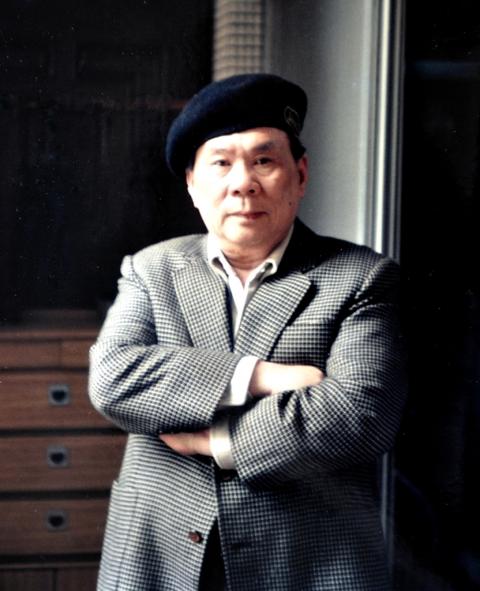
Photo courtesy of Taipei Symphony Orchestra
Yang San-lang was neither’s birth name. The painter originally went by the Japanese name Sasaburo Yo (楊佐三郎), shortening it to the Chinese-style Yang San-lang after Japan surrendered to the Allies in 1945. The composer was originally named Yang Wo-cheng (楊我成), adopting the name Saburo, or San-lang in Mandarin, while he was a music apprentice in Japan.
Even more coincidentally, both died in May — the composer in 1989 and the painter in 1995, both leaving behind a respected body of work that is still celebrated today.
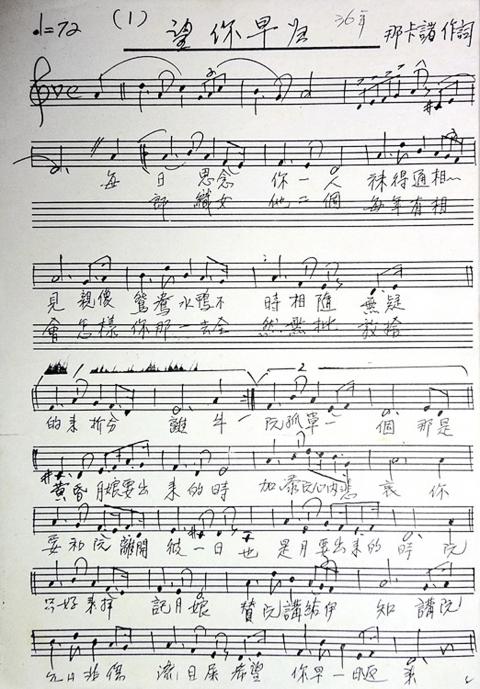
Photo courtesy of Taiwan Music Institute
YOUNG REBELS
Despite the aforementioned similarities, the two had very different upbringings. Painter Yang was born into a wealthy family; his father was a poet, tobacco and liquor dealer and was well-connected politically.
During elementary school, Painter Yang passed by a stationery shop that often displayed oil paintings by Toho Shiotsuki, a local art teacher. He was immediately captivated. His father hoped that he could learn a lucrative trade in Japan, but all Painter Yang wanted to do was study art.
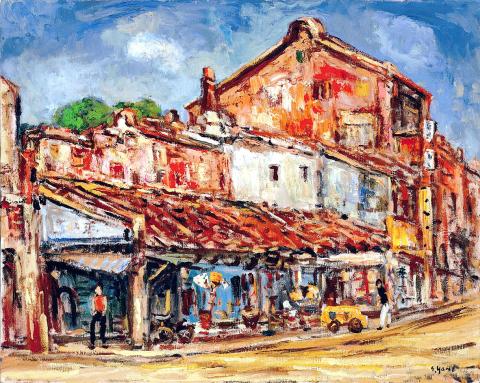
Photo: CNA
Unable to sway his father, Painter Yang stashed away money he earned from helping out with the family business as well as Lunar New Year red envelopes. In May of 1922, without notifying his family, a 15-year-old Yang boarded a Japan-bound freighter at Keelung harbor.
He left behind a note for his elder brother: “I will become a famous painter.” His family eventually forgave him, and Painter Yang entered a prestigious art school in Kyoto. In 1927, his father submitted one of his paintings to the first art exhibition in Taiwan. The government purchased it for a significant sum, proving that art could make money. Painter Yang returned home after graduating in 1928.
Composer Yang developed an infatuation with brass instruments during elementary school, joining the school band in fourth grade. His family was of modest means, but he still found time to play trumpet in his high school’s military band while working part time.
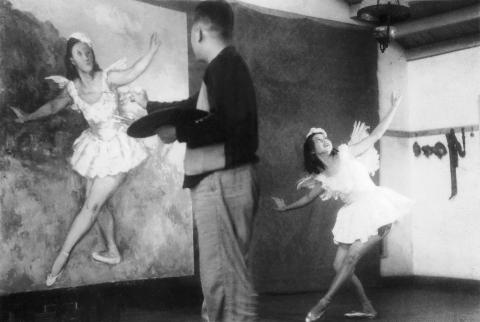
Photo courtesy of Tsai Jui-yueh Dance Research Institute
After graduation, he worked as an elevator operator in a dance club. Through the job, he grew close to the club’s musical director, who taught him how to play violin and helped him advance his trumpet skills. A Japanese musician living in Taiwan noticed Composer Yang’s talent, and recommended that he head to Japan to hone his craft.
Composer Yang’s father objected, but he packed his bags and set out anyway at the age of 18. Since his family wouldn’t pay for him to attend music school, he served as an apprentice under composer Shigeo Kiyomizu.
Life was not easy — Composer Yang recalls that during the day, he practiced, studied and helped Kiyomizu with household chores. At night, he worked the clubs as a musician. After three years, Composer Yang was ready to strike out on his own.
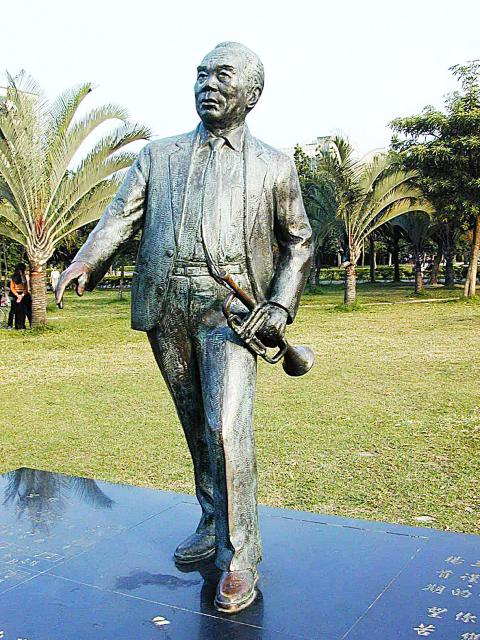
Photo: Ho Jui-ling, Taipei Times
PROFESSIONAL CAREER
Here’s where their lives greatly diverge: Painter Yang returned home to work at the family business and make art on the side. He also had the privilege in 1932 to study in France. He returned to Taiwan in 1934 and, with several other painters including Chen Cheng-po (陳澄波), formed the Taiyang Art Research Association (台陽美術協會), which put on 10 traveling shows until its dissolution in 1944.
The group was closely associated with anti-colonial resistance groups such as the Taiwan Cultural Association (台灣文化協會), founded by Chiang Wei-shui (蔣渭水). Poet Wang Pai-yuan (王白淵) called the group an “art movement, but also an artistic expression of the Taiwanese nationalist movement.”
Meanwhile, Composer Yang spent his post-apprenticeship years as a professional musician in Japanese-occupied northeast China. He only returned to Taiwan when World War II intensified in 1945.
After the war, the Chinese Nationalist Party (KMT) recruited Painter Yang to help organize the Taiwan Fine Arts Exhibition, which took place in Zhongshan Hall in December 1946. An overjoyed Yang was more than happy to continue his mission of promoting local artists, who “surpassed the Japanese in talent, and shoud be seen as the pride of the Han Chinese people.”
After his wife saved him from being arrested several times during the 228 Incident — an anti-government uprising in 1947 that was brutally suppressed — Painter Yang continued to paint and promote local artists. The Taiyang Art Research Association was revived in 1948, and continues to put on annual shows until this day.
After the war, Composer Yang formed a band for the Central Broadcasting System, which had a program that introduced one new Hoklo (also known as Taiwanese) song per week.
Submissions were scarce, and the station’s artistic director Lu Chuan-sheng (呂泉生) encouraged Composer Yang to write something for the program. A reluctant Yang turned in his first song, Hoping for Your Swift Return (望你早歸), which, to his surprise, became a hit. Many Taiwanese were recruited to support the Japanese army in Southeast Asia during World War II, and had yet to return home. The song resonated perfectly with the situation of countless families.
Lu had also collaborated with Painter Yang. In 1943, he wrote the score for the controversial play Castrated Chicken (閹雞), for which Painter Yang served as set designer.
Composer Yang soon left the radio station, forming the Black Cat Song and Dance Troupe (黑貓歌舞團). Comprising of up to 50 members, their performances were wildly popular and became a vehicle for Yang’s hit songs. There wasn’t much entertainment during those days, and people, especially those in rural areas, eagerly awaited for the Black Cats to arrive in town.
In 1965, due to the rise of television as well as popular preference toward troupes that featured strippers and dirty jokes, Composer Yang dissolved the Black Cats. For the next 11 years, he struggled to make ends meet, and in 1976 he left music completely, starting a ranch in Taoyuan. He started writing songs again in 1986 after his economic situation stabilized.
Composer Yang often stated during interviews that despite his popularity, he never made much off music due to the lack of copyright laws during those times.
“If I had studied business, maybe I would have found more success,” he laments in his memoir. “It was only after my parents died that I deeply regret not listening to them.”
Taiwan in Time, a column about Taiwan’s history that is published every Sunday, spotlights important or interesting events around the nation that have anniversaries this week.

April 14 to April 20 In March 1947, Sising Katadrepan urged the government to drop the “high mountain people” (高山族) designation for Indigenous Taiwanese and refer to them as “Taiwan people” (台灣族). He considered the term derogatory, arguing that it made them sound like animals. The Taiwan Provincial Government agreed to stop using the term, stating that Indigenous Taiwanese suffered all sorts of discrimination and oppression under the Japanese and were forced to live in the mountains as outsiders to society. Now, under the new regime, they would be seen as equals, thus they should be henceforth

Last week, the the National Immigration Agency (NIA) told the legislature that more than 10,000 naturalized Taiwanese citizens from the People’s Republic of China (PRC) risked having their citizenship revoked if they failed to provide proof that they had renounced their Chinese household registration within the next three months. Renunciation is required under the Act Governing Relations Between the People of the Taiwan Area and the Mainland Area (臺灣地區與大陸地區人民關係條例), as amended in 2004, though it was only a legal requirement after 2000. Prior to that, it had been only an administrative requirement since the Nationality Act (國籍法) was established in

With over 80 works on display, this is Louise Bourgeois’ first solo show in Taiwan. Visitors are invited to traverse her world of love and hate, vengeance and acceptance, trauma and reconciliation. Dominating the entrance, the nine-foot-tall Crouching Spider (2003) greets visitors. The creature looms behind the glass facade, symbolic protector and gatekeeper to the intimate journey ahead. Bourgeois, best known for her giant spider sculptures, is one of the most influential artist of the twentieth century. Blending vulnerability and defiance through themes of sexuality, trauma and identity, her work reshaped the landscape of contemporary art with fearless honesty. “People are influenced by

Three big changes have transformed the landscape of Taiwan’s local patronage factions: Increasing Democratic Progressive Party (DPP) involvement, rising new factions and the Chinese Nationalist Party’s (KMT) significantly weakened control. GREEN FACTIONS It is said that “south of the Zhuoshui River (濁水溪), there is no blue-green divide,” meaning that from Yunlin County south there is no difference between KMT and DPP politicians. This is not always true, but there is more than a grain of truth to it. Traditionally, DPP factions are viewed as national entities, with their primary function to secure plum positions in the party and government. This is not unusual